Cyclone Testing Station Facilities
Facilities
- Aboriginal and Torres Strait Islander in Marine Science
- Courses
- Future Students
- Current Students
- Research and Teaching
- Partners and Community
- About JCU
- Reputation and Experience
- Celebrating 50 Years
- Academy
- Anthropological Laboratory for Tropical Audiovisual Research (ALTAR)
- Anton Breinl Research Centre
- Agriculture Technology and Adoption Centre (AgTAC)
- Living on Campus
- How to apply
- Advanced Analytical Centre
- Alumni
- AMHHEC
- Aquaculture Solutions
- AusAsian Mental Health Research Group
- ARCSTA
- Area 61
- Association of Australian University Secretaries
- Australian Lions Stinger Research
- Australian Tropical Herbarium
- Australian Quantum & Classical Transport Physics Group
- Boating and Diving
- JCU-CSIRO Partnership
- Employability Edge
- Clinical Psychedelic Research Lab
- Centre for Tropical Biosecurity
- Career Ready Plan
- Careers at JCU
- Careers and Employability
- Chancellery
- Centre for Tropical Bioinformatics and Molecular Biology
- CITBA
- CMT
- CASE
- College of Business, Law and Governance
- College of Healthcare Sciences
- College of Medicine and Dentistry
- College of Science and Engineering
- CPHMVS
- Centre for Disaster Solutions
- CSTFA
- Cyber Security Hub
- Cyclone Testing Station
- The Centre for Disaster Studies
- Daintree Rainforest Observatory
- Defence
- Discover Nature at JCU
- Research Division
- Services and Resources Division
- Education Division
- Elite Athletes
- eResearch
- Environmental Research Complex [ERC]
- Estate
- Fletcherview
- Foundation for Australian Literary Studies
- Gender Equity Action and Research
- General Practice and Rural Medicine
- JCU Orientation
- Give to JCU
- Governance
- Art of Academic Writing
- Art of Academic Editing
- Graduate Research School
- Graduation
- Indigenous Education and Research Centre
- Indigenous Engagement
- Indigenous Legal Needs Project
- Inherent Requirements
- IsoTropics Geochemistry Lab
- IT Services
- International Students
- Research and Innovation Services
- JCU Eduquarium
- JCU Heroes Programs
- JCU Webinars
- JCU Events
- JCU Global Experience
- JCU Ideas Lab
- JCU Job Ready
- JCU Motorsports
- JCU Prizes
- JCU Sport
- JCU Turtle Health Research
- Language and Culture Research Centre
- CEE
- LearnJCU
- Library
- Mabo Decision: 30 years on
- MARF
- Marine Geophysics Laboratory
- New students
- Off-Campus Students
- Office of the Vice Chancellor and President
- Virtual Open Day
- Orpheus
- Open Day
- Outstanding Alumni
- Parents and Partners
- Pathways to university
- Pharmacy Full Scope
- Planning for your future
- Placements
- Policy
- PAHL
- Publications
- Professional Experience Placement
- Queensland Research Centre for Peripheral Vascular Disease
- Rapid Assessment Unit
- RDIM
- Researcher Development Portal
- Roderick Centre for Australian Literature and Creative Writing
- Safety and Wellbeing
- Scholarships
- Contextual Science for Tropical Coastal Ecosystems
- Staff
- State of the Tropics
- Strategic Procurement
- Student Equity and Wellbeing
- Student profiles
- SWIRLnet
- TARL
- TESS
- TREAD
- TropEco for Staff and Students
- TQ Maths Hub
- TUDLab
- Unicare Centre and Unicampus Kids
- UAV
- VAVS Home
- Work Health and Safety
- WHOCC for Vector-borne & NTDs
- Media
- Copyright and Terms of Use
- Australian Institute of Tropical Health & Medicine
- Pay review
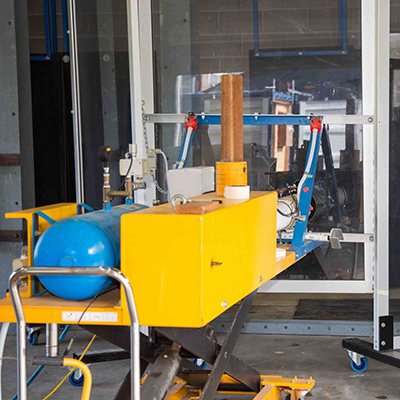
The Cyclone Testing Station has facilities to test the impact resistance of building envelope components. Typical components to be tested include wall panel or cladding systems, windows, personnel and roller doors, screens and shutters.
The impact resistance test is NATA accredited. Impact velocities of up to 45 m/s (~160 km/h) can be achieved with our wind driven debris simulators. The maximum sample size is limited to about 2 m x 5 m, due to physical restrictions at the test facility.
Technical Note 4 - Simulated Windborne Debris Impact Testing of Building Envelope Components
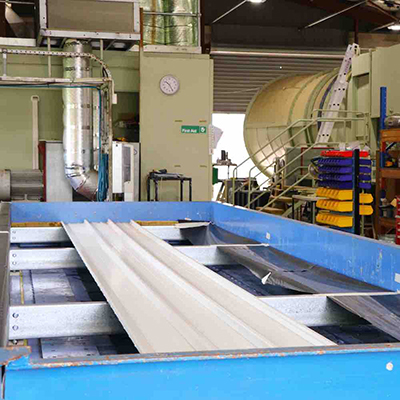
The airbox is an open topped pressure chamber. It is 11 m long, 2 m wide and 0.5 m high. It is used to simulate wind pressure on structural elements such as roof sheeting, wall cladding, structural panels, roof vents, skylights, windows, doors and other building elements. For testing cladding, a specimen consisting of a section of roof or wall is fabricated in the normal manner and installed to become the top surface of the chamber. The cladding can be extended over a number of spans to form the test specimen. The airbox is available as a tool for industry to predict the likely response of products when subject to high wind pressures. In addition, it is used for research into the performance of cladding and other structural elements.
The facility is used by manufacturers to verify the performance of their material in a particular situation, or to develop sets of pressure/span tables showing the recommended use of their product. This is the only such facility in Australia that has been built and is operated by an establishment independent of the roofing and cladding industry. As such it can provide a completely independent and confidential service for all manufacturers and is available for commercial testing.
Technical Note 2 - Simulated Wind Load Testing of Roof and Wall Cladding Systems
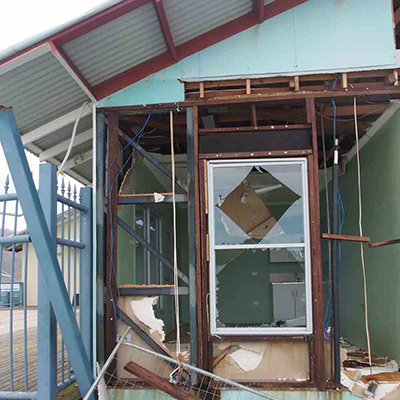
One of the Station's major research projects is the house testing programme. There have been many full scale structures tested ranging from a 1940's timber house to a split level brick house and to a prefabricated kit home.
This research involves the construction of full size houses and then testing them to measure their response to simulated wind forces. Depending on the design of the building these forces are applied to simulate the passage of a four hour tropical cyclone or the effect of peak gusts associated with a thunder storm. From the results of testing full size houses rather than components we can determine not only the overall strength, stiffness and resilience of the structure, but discover the weak links of the load paths, that is the path the applied loads take through the structure to get to the foundations.
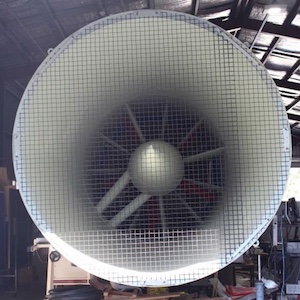
The 2 x 2.5 x 22 m Boundary Layer Wind Tunnel is used for carrying out contract tests and research projects. Results from studies have been used in the development of the wind loading standards in Australia and overseas. Commercial wind tunnel model testing services are offered by the CTS in the areas of:
- Cladding Pressure and Structural Loads
- Ground Level Wind Climate
- Structural Dynamics
- Building Ventilation
- Atmospheric Dispersion
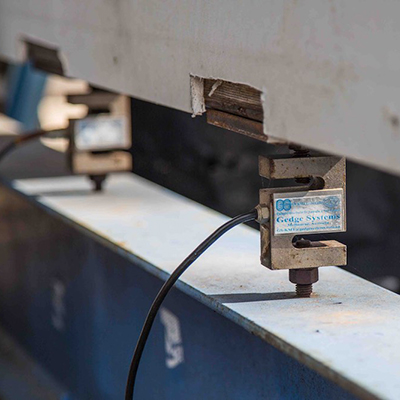
A variety of tests can be conducted in the Structural and Materials Testing Laboratories, ranging from small scale tests of single connections (eg screw pull-out) to the evaluation of wall panel systems.
Our testing equipment includes: Universal Testing Machines, Structures Floors Loading Frames and an Airbag Test Rig.
The main feature of the structures laboratory is a reaction floor consisting of a 1.2 m thick pre-stressed concrete slab to which the testing rigs can be attached.